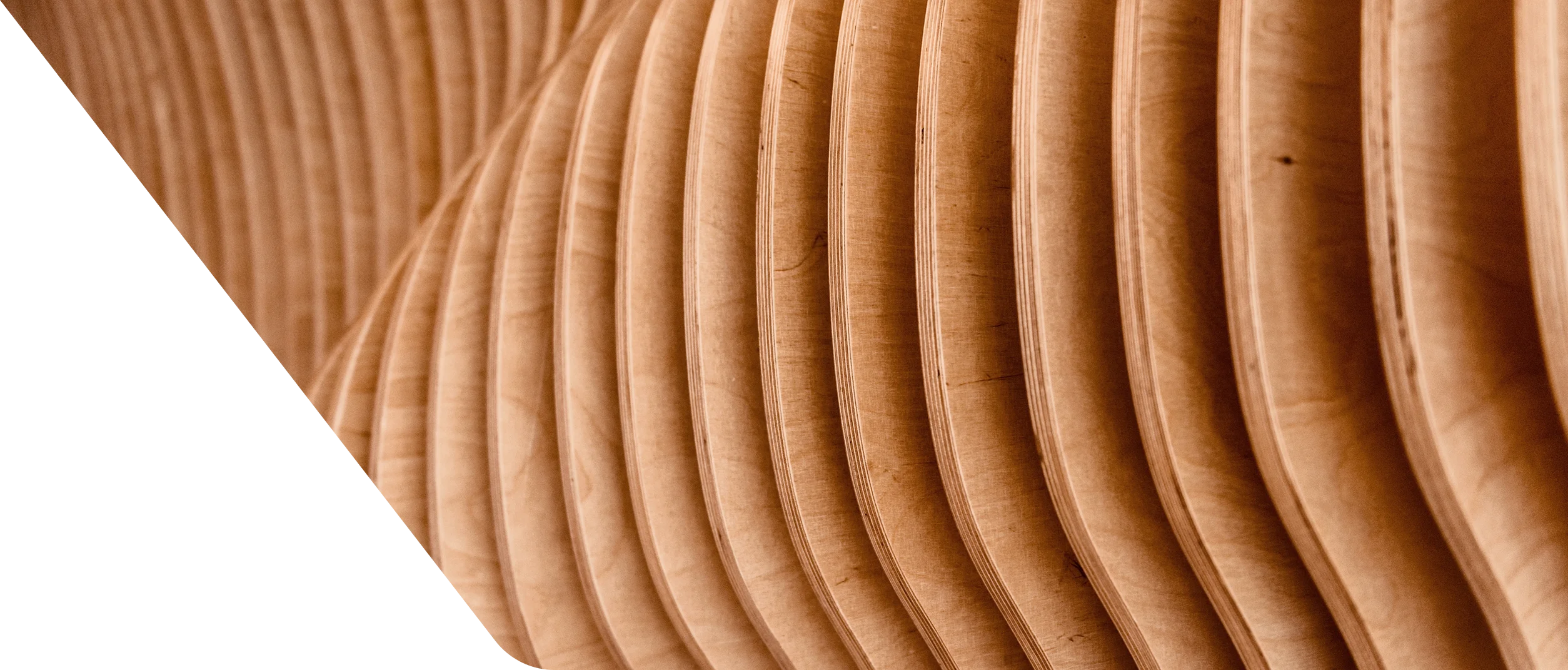ANSI/AWI 0641-2019 - Architectural Wood Casework
3.4 Aesthetic
a) In relation to this standard, aesthetic performance refers to and is an evaluation of surfaces that will be exposed or semi-exposed following installation.
b) The three levels of aesthetic s are Premium, Custom, and Economy:
| Custom Grade | ||
|---|---|---|
| The aesthetic grade defining the highest degree of control over materials, workmanship, and manufacture | The aesthetic grade defining a high degree of control over materials, workmanship, and manufacture | The aesthetic grade defining the minimum degree of control over materials, workmanship, and manufacture |
c) Surface terminology category examples may be found in section 5.3 (See also, Figure 86)
d) When this standard is referenced within the s, and no aesthetic grade is specified, Product shall be executed in accordance with and meet requirements.
e) Unless otherwise specified, Product default shall include:
- Flush overlay frameless construction
- Doors
- (2 per wall unit and 1 per base unit)
- Unfinished closed-grain intended for an or white decorative laminate ( or )
f) Unless otherwise specified or noted within this standard, vertical surfaces with a defined and/or directional pattern shall be applied and assembled with grain or pattern oriented vertically.
g) At exposed exterior surfaces, exposed fasteners are not permitted except at s.
h) At exposed interior surfaces, fastener cover caps of compatible color to interior finish shall be furnished by the /supplier and are:
| Premium | Custom | Economy |
|---|---|---|
| Required | Required | Not required |
i) When fastener provision is countersunk, fasteners shall be countersunk.
j) Final adjustments for gaps, flushness, and alignment shall be in accordance with the AWI 0620-2018 – Finish Carpentry/Installation Standard.
k) require consistent color or species to be used throughout entire project.
l) At semi-exposed surfaces, matching exposed surface is only required if so specified.
m) Concealed surface materials shall be at the option of the manufacturer/supplier.
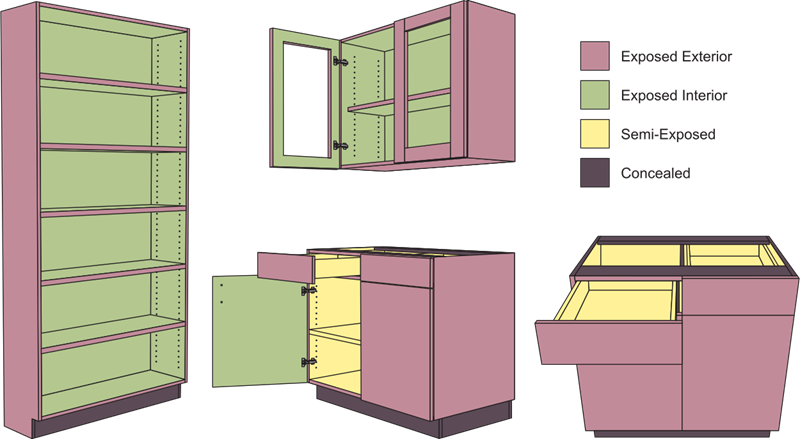
Figure 86
3.4.1 Base, Wall, and Tall Cabinets
a.) At face frame casework, exposed fastening:
| Premium | Custom | Economy |
|---|---|---|
| Is not permitted | Is not permitted | May be face nailed |
b) Grain shall run vertically on stiles and horizontally on rails.
c.) Horizontal reveal between countertop’s bottom edge and overlay doors, drawer fronts, and false fronts shall be 6.4 mm [.250”] to 25.4 mm [1”] and shall be consistent across elevations. (See Figure 16)
d.) When designed for flush inset doors, use of a bottom face frame component is:
| Premium | Custom | Economy |
|---|---|---|
| Required | Required | Not required |
a) Horizontal reveal between countertop’s bottom edge and overlay doors, drawer fronts, and false fronts shall be 3.2 mm [.125”] to 9.6 mm [.375”] and shall be consistent across elevations. (See Figure 15) At Laboratory countertops, the maximum reveal permitted shall be 25.4 mm [1”]. (See Figure 17)
a) Bottoms of wall-hung cabinets for exposed interior shall be:
| Premium | Custom | Economy |
|---|---|---|
| Uniform in thickness for the entire elevation or connected elevations except when concealed behind a minimum 38.1 mm [1.500”] face frame component | Uniform in thickness for the entire elevation or connected elevations except when concealed behind a minimum 38.1 mm [1.500”] face frame component | Material thickness at the option of the manufacturer/supplier |
a) On wall-hung cabinets, if cabinet ends or sides extend below the cabinet bottoms, the portion below the cabinet bottom is considered an exposed interior surface and shall be:
| Premium | Custom | Economy |
|---|---|---|
| The same color and pattern as the exposed surface | The same color and pattern as the exposed surface | Material at the option of manufacturer/supplier |
b) Exposed ends shall be:
| Premium | Custom | Economy |
|---|---|---|
| Of integral construction | Of integral construction or secondarily applied | Of integral construction or secondarily applied |
c) When viewed from the side, exposed ends shall conceal all other cabinet components, except toe kicks on base cabinets where ladder bases or levelers are used.
d) Horizontal components (excluding countertops) shall not extend beyond the exposed end.
e) Secondarily applied exposed ends shall be mechanically fastened to the cabinet body.
f) Exposed fasteners are not permitted, except at access panels.
g) Unless prevented by design or usage, drawer compartments within a casework unit shall be separated from shelf or open compartments by a full-depth vertical division.
a) Cabinet backs are:
| Premium | Custom | Economy |
|---|---|---|
| Required | Required | Required if back is an exposed surface |
b) At multiple-panel backs, visible joints are not permitted at exposed or semi-exposed interiors where panels intersect.
c) At semi-exposed surfaces, vinyl overlay is permitted in cabinet backs if matched in color to other semi-exposed materials.
a) At the option of the manufacturer/supplier, base/toe kick shall be integral (constructed as an integral part of the cabinet body) or separate (constructed as a separate component)
a) Joints in Product shall be assembled to meet the tolerances defined within this standard and be securely attached, with any adhesive residue removed from exposed and semi-exposed surfaces.
b) Fixed horizontal cabinet components, including tops and bottoms, shall be either flush or set back a maximum of 2 mm [.078”] at their intersection with vertical components (See Figure 27) and shall be uniform throughout the room.
c) At 3 mm [.118”] thick edgebanding, radiused, beveled, or square edges and ends (See Figure 28) are permitted for horizontal and vertical components.
d) At 3 mm [.118”] thick edgebanding, radiused, beveled, or square edges are permitted provided that the core of the square edge component is not visible and that the “V” or gap that is formed where a component with a square end meets a component with a radius (See Figure 29) is uniform throughout the room and does not exceed:
| Premium | Custom | Economy |
|---|---|---|
| .3 mm [.012”] | .4 mm [.016”] | .6 mm [.025”] |
e) Flushness variations in exposed and semi-exposed surfaces (See Figure 26, D) when mitered or butted shall not exceed:
| Premium | Custom | Economy |
|---|---|---|
| .3 mm [.012”] | .4 mm [.016”] | .6 mm [.025”] |
f) Gaps in exposed and semi-exposed surfaces, when mitered or butted (see Figure 30, A) shall not exceed:
| Premium | Custom | Economy |
|---|---|---|
| .3 mm [.012”] wide by 20% of the joint length | .4 mm [.016”] wide by 20% of the joint length | .6 mm [.025”] wide by 20% of the joint length |
g) Gaps in exposed and semi-exposed surfaces between parallel components (see Figure 30, B) shall not exceed:
| Premium | Custom | Economy |
|---|---|---|
| .3 mm x 101.6 mm [.012” x 4”] and shall not occur within 1829 mm [72”] of a similar gap in the same joint | .4 mm x 152.4 mm [.016” x 6”] and shall not occur within 1524 mm [60”] of a similar gap in the same joint | .6 mm x 229 mm [.025” x 9”] and shall not occur within 1219 mm [48”] of a similar gap in the same joint |
h) Gaps in exposed and semi-exposed surfaces, when mitered or butted (see Figure 30, C), shall not exceed:
| Premium | Custom | Economy |
|---|---|---|
| .3 mm [.012”] | .4 mm [.016”] | .6 mm [.025”] |
i) Joint filler (putty), when used, shall be inconspicuous.
j) Sheet and laminated wood panels shall be permitted to move, float, expand, or contract as a result of ambient humidity changes.
a) Material, pattern, and color shall be as specified and, if not specified, shall be at the option of the manufacturer/supplier.
b) Decorative laminate shall be of one color or pattern per room, with a maximum of five different colors or patterns per project.
a) Require HPDL or TFL of specified color or pattern.
a) At exposed interior surfaces at doors and drawer fronts, interior face shall be:
| Premium | Custom | Economy |
|---|---|---|
| Same material, color, pattern, and thickness as face | Same material and thickness as face, color to match interior or face | Same material and thickness as face, color to match interior or face |
b) Exposed interior surfaces, except at doors and drawer fronts, require:
| Premium | Custom | Economy |
|---|---|---|
| HPDL or TFL compatible to exposed exterior surface in color, grain, and pattern | HPDL or TFL compatible to exposed exterior surface in color, grain, and pattern | HPDL or TFL at the option of the manufacturer/supplier |
a) Semi-exposed surfaces shall be HPDL or TFL at the option of the manufacturer/supplier.
a) Unless otherwise specified, Product shall be finished with a finishing technology per AWI Finishing Standard (current edition) of the manufacturer/supplier’s choice.
b) Hardboard is not permitted for exposed surfaces.
a) Material shall be of the specified species, cut, veneer match, and:
| Premium | Custom | Economy |
|---|---|---|
| Solid stock shall be well matched for color and grain | Solid stock and/ or veneer shall be compatible in color and grain | Solid stock and/ or veneer shall be compatible in color |
| Veneer shall be compatible in color with solid stock | ||
| Adjacent veneer panels shall be well matched for color and grain |
b) Veneer for transparent finish shall be a minimum of:
| Premium | Custom | Economy |
|---|---|---|
| ANSI/HPVA HP-1 (latest edition) Grade AA | ANSI/HPVA HP-1 (latest edition) Grade A | ANSI/HPVA HP-1 (latest edition) Grade A |
a) Transparent finish requires:
| Premium | Custom | Economy |
|---|---|---|
| The same species and cut as the exposed exterior surface | The same species as the exposed exterior surface | Decorative laminate or wood veneer at the option of the manufacturer/supplier |
b) Veneer for transparent finish shall be a minimum of:
| Premium | Custom | Economy |
|---|---|---|
| ANSI/HPVA HP-1 (latest edition) Grade A | ANSI/HPVA HP-1 (latest edition) Grade B | ANSI/HPVA HP-1 (latest edition) Grade C |
c) Veneer at interior face of door and drawer fronts shall be a minimum of:
| Premium | Custom | Economy |
|---|---|---|
| ANSI/HPVA HP-1 (latest edition) Grade A face of the same species and cut as the exposed exterior surface | ANSI/HPVA HP-1 (latest edition) Grade B face of the same species and cut as the exposed exterior surface | ANSI/HPVA HP-1 (latest edition) Grade C face of the same species as the exposed exterior surface |
a) Surfaces shall be a minimum of:
| Premium | Custom | Economy |
|---|---|---|
| ANSI/HPVA HP-1 (latest edition) Grade C of compatible species to exposed surface | ANSI/HPVA HP-1 (latest edition) Grade C of compatible species to exposed surface or decorative laminate | At the option of the manufacturer/supplier |
a) Unless otherwise specified, Product shall be finished with a finishing technology per AWI Finishing Standard (current edition) of the manufacturer/supplier’s choice.
a) Opaque finish permits substrates of:
| Premium | Custom | Economy |
|---|---|---|
| MDF or MDO | MDF, MDO, closed-grain hardwood veneer, or solid stock | Particleboard, MDF, MDO, softwood veneer, hardwood veneer, or solid stock |
b) Veneer for opaque finish shall be closed-grain hardwood of manufacturer/supplier’s choice of species and a minimum of:
| Premium | Custom | Economy |
|---|---|---|
| ANSI/HPVA HP-1 (latest edition) Grade B | ANSI/HPVA HP-1 (latest edition) Grade C | ANSI/HPVA HP-1 (latest edition) Grade D |
a) Opaque finish permits substrates of:
| Premium | Custom | Economy |
|---|---|---|
| MDF or MDO | MDF, MDO, closed-grain hardwood veneer, or solid stock | Particleboard, MDF, MDO, softwood veneer, hardwood veneer, or solid stock |
a) Opaque finish permits substrates of:
| Premium | Custom | Economy |
|---|---|---|
| MDF or MDO | MDF, MDO, closed-grain hardwood veneer, or solid stock | Particleboard, MDF, MDO, softwood veneer, hardwood veneer, or solid stock |
3.4.2 Doors
a) This section applies to doors less than 34.9 mm [1.375”] thick.
b) Door thicknesses of 34.9 mm [1.375”] or greater shall be governed by the ANSI/WDMA I.S.1A (latest edition) and ANSI/WDMA I.S.6A (latest edition) Architectural Door Standards, as applicable. Doors and casework utilizing such doors are not subject to the tolerances and conditions contained within this AWI standard.
a) Flush overlay is the default for either frameless or face frame casework.
b) At exposed knuckle hinges, defaulting to reveal overlay is at the option of the manufacturer/supplier, unless otherwise specified.
c) At reveal overlay, the reveal shall be determined by the hinge clearance requirements (See Figure 35).
d) When adjacent and exposed, hinges shall align horizontally.
e) At flush overlay, wrap-around hinges shall be let into the edge of the door to maintain proper gap tolerance (See Figure 33). The resulting notching for hinges is:
| Premium | Custom | Economy |
|---|---|---|
| Required to be painted or stained to match exposed surface | Not required to be finished | Not required to be finished |
f) At reveal overlay, wrap-around hinges are not required to be let into the edge of the door (See Figure 34).
a) Interior faces of sliding doors shall be of the same thickness and material as the exterior faces.
b) Thickness of wood and/or decorative laminate doors shall be a minimum of 6.4 mm [.250”] for doors 610 mm [24”] and under in height or 19.1 mm [.750”] for doors over 610 mm [24”] in height.
c) Hardboard 6.4 mm [.250”] thick and painted to match adjacent surface is:
| Premium | Custom | Economy |
|---|---|---|
| Not permitted | Not permitted | Permitted |
d) Sliding doors more than 1.5 times as tall as they are wide shall be mounted with an overhead metal track and roller hanger to prevent tipping and binding.
e) In hanging track systems, exposed tracks are permitted.
f) Frameless glass sliding doors require carriers with metal tracks and top guides. Bottoms of upper cabinets shall be reinforced as needed to prevent sagging.
g) Thickness of frameless glass sliding doors shall be a minimum of 6.4 mm [.250”] tempered or laminated glass at the option of the manufacturer/supplier.
h) Frameless glass sliding doors shall have:
| Premium | Custom | Economy |
|---|---|---|
| Exposed edges flat polished | Exposed edges flat polished | Exposed edges flat ground |
a) Moulded profile (sticking) shall be at the option of the manufacturer/supplier.
b) Stiles shall run the full height of the door.
c) Rails, including top, intermediate, and bottom, shall run between stiles.
d) Grain or directional pattern shall run vertically on stiles and horizontally on rails.
e) At panels, direction of grain or pattern shall:
| Premium | Custom | Economy |
|---|---|---|
| Run vertically and adjacent door panels for transparent finish shall match for color and grain | Run vertically and adjacent door panels for transparent finish shall match for color and grain | Be at the option of the manufacturer/supplier |
f) When solid stock is used with veneer panels:
| Premium | Custom | Economy |
|---|---|---|
| Solid stock shall be well matched for color | Solid stock and veneer panel shall be compatible in color | Solid stock and veneer panel shall be compatible in color |
| Veneer panel shall be compatible in color with solid stock |
g) Flat panels shall be a minimum of 6.4 mm [.250”] thick.
h) At flat panels:
| Premium | Custom | Economy |
|---|---|---|
| Solid lumber panels are not permitted | Edge glued solid lumber is permitted if at least 12.7 mm [.500”] thick and is 350 mm [13.75”] wide or less | Edge glued solid lumber is permitted if at least 12.7 mm [.500”] thick and is 350 mm [13.75”] wide or less |
i) At raised panels:
| Premium | Custom | Economy |
|---|---|---|
| Solid lumber panels are not permitted | Edge glued solid lumber is permitted for panels 350 mm [13.75”] wide or less | is permitted for panels 350 mm [13.75”] wide or less |
j) Solid lumber is permitted for rim banding raised panels if mitered and glued under pressure.
k) The panel face veneer may be applied before or after rim banding.
l) Regardless of retention method, panels shall have adequate space to move, float, expand or contract as a result of ambient humidity changes.
m) Applied moulding shall be securely attached. Fasteners shall be inconspicuous.
n) Cores of panel product materials shall not be exposed.
a) When machining a door with glass cut-out, minimum clearance shall be 9.5 mm [.375”] between hardware machining and glass cut-out.
b) At opaque finish and decorative laminate doors, stops shall be synthetic or solid stock and compatible color to exposed interior surfaces.
c) At transparent finish doors, stops shall be synthetic or solid stock of compatible species to adjacent surfaces and compatible color to exposed interior surfaces.
d) Stops shall be continuous, removable, and on the interior only.
e) Mechanically fastened glass clips (See Figure 32) are:
| Premium | Custom | Economy |
|---|---|---|
| Not permitted | Permitted in lieu of continuous stops | Permitted in lieu of continuous stops |
f) Silicone or glazing putty used as a stop is:
| Premium | Custom | Economy |
|---|---|---|
| Not permitted | Not permitted | Permitted |
g) Exposed rabbet shall be:
| Premium | Custom | Economy |
|---|---|---|
| Painted or stained compatible to the exposed interior surface | Painted or stained compatible to the exposed interior surface | At the option of the manufacturer/supplier |
a) When veneer cores are specified for doors, they may be susceptible to warp and shall not be subject to warp/flatness tolerances contained within this standard.
b) Grained or patterned faces on doors, drawer fronts, and false fronts shall:
| Premium | Custom | Economy |
|---|---|---|
| Run and match vertically and be sequenced horizontally within each cabinet. At cathedral grain, the crown shall be pointing up and run in the same direction for the entire project. Doors, drawer fronts, and false fronts shall be well-matched for color and grain across multiple cabinet faces in one elevation. Requirement for blueprint or sequencing between cabinets only if specified. (See Figure 22) | Run and match vertically within each cabinet. Doors and drawer fronts shall be compatible in color across multiple faces in each room. (See Figure 21) | Run either vertically or horizontally at the option of the manufacturer/ supplier for the entire project. Doors shall be vertical. Mismatch is permitted. (See Figure 20) |
c) Solid lumber is not permitted at doors, except at stile and rail doors.
3.4.3 Drawers
a) Drawer box materials shall be at the option of the manufacturer/supplier provided the assembled drawer meets the specified Performance Duty Level and the requirements set forth in Sections 3.4.3 through 3.4.3.4.
b) Drawer boxes (including trays and sliding bins) of solid wood or veneer are required to be finished with a finishing technology per AWI Finishing Standard (current edition), of the manufacturer/supplier’s choice.
c) Drawer box shall be fitted to the cabinet to allow no more than 50.8 mm [2”] of clearance between the back of the drawer box and the interior face of rear panel of the cabinet body with a drawer box maximum length of 558.8 mm [22”] unless otherwise specified. Drawer boxes greater than 558.8 mm [22”] may be supplied at the option of the manufacturer/supplier. (See Figure 72-A)
d) Drawer box shall be fitted to the cabinet to allow no more than 38.1 mm [1.500”] of clearance between the top of the drawer box and the or structural component above (See Figure 72-B).

Figure 72
a) At decorative laminate drawer box joinery:
| Premium | Custom | Economy |
|---|---|---|
| Visible core is not permitted | Visible core shall be edgebanded, painted, or stained to match drawer side | Visible core shall be at the option of manufacturer/supplier |
a) Drawer box systems shall be assembled in accordance with manufacturer/supplier’s documented instructions.
b) Wood components shall meet semi-exposed requirements within this standard or be color compatible with box system at the option of the manufacturer/supplier.
a) Horizontal grain for solid wood drawer fronts is permitted.
a) Grained or patterned faces on drawer fronts shall run either vertically or horizontally at the option of the manufacturer/supplier for the entire project. (See Figure 18 and Figure 19)
3.4.4 Shelves
a) Grain or directional pattern of the surface shall run the width of the cabinet.
a) Thickness shall be:
| Premium | Custom | Economy |
|---|---|---|
| Uniform at each elevation or connected elevations in open casework |
Uniform at each elevation or connected elevations in open casework |
At the option of the manufacturer/supplier |
a) Minimum depth shall be:
| Premium | Custom | Economy |
|---|---|---|
| No less than 6.4mm [.250″] shorter than the interior cabinet depth |
No less than 6.4mm [.250″] shorter than the interior cabinet depth |
At the option of the manufacturer/supplier |
b) Length shall be (See Figure 36):
| Premium | Custom | Economy |
|---|---|---|
| A maximum of 3.2 mm [.125″] less than the interior cabinet width plus any additional offset created by the shelf rests used |
A maximum of 3.2 mm [.125″] less than the interior cabinet width plus any additional offset created by the shelf rests used |
Maximum length at the option of manufacturer/ supplier |
c) Metal shelf standards shall extend vertically to within 152.4 mm [6”] of the interior top and bottom of the cabinet shelf space, and be recessed in a plow, slightly proud of the face with the core not exposed.
d) Bored- shelf rest systems shall extend vertically to within 152.4 mm [6”] of the interior top and bottom of the cabinet shelf space.
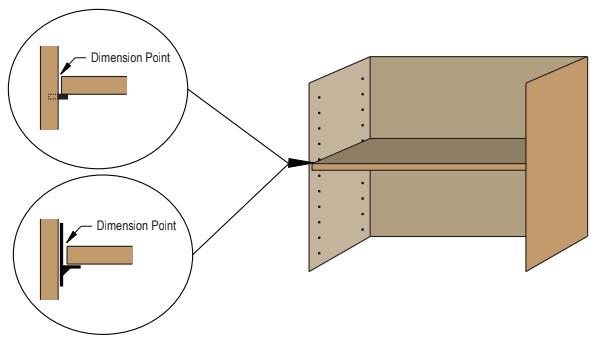
Figure 36
3.4.5 Dividers
a) Shall be:
| Premium | Custom | Economy |
|---|---|---|
| Well-matched to adjacent surfaces |
Hardboard permitted if tempered and smooth on both sides |
Hardboard permitted if tempered and smooth on both sides |
3.4.6 Other
a) Casework surfaces that are behind sliding presentation panels or removable presentation panels (such as marker and tack boards) shall be treated as:
| Premium | Custom | Economy |
|---|---|---|
| Exposed surfaces | Exposed surfaces | Semi-exposed surfaces |
a) Cut-outs shall have a minimum 6.4 mm [.250”] radius.
b) At cut-outs and corresponding access panels creating a reveal greater than 3.2 mm [.125”], edges must be painted or edgebanded.
a) Aesthetic requirements of installed scribes, fillers, and s shall be in accordance with ANSI/http://awinet.org/wp-content/uploads/2023/10/awi 0620-2018 – Finish Carpentry/Installation.
b) Casework shall be scribed to finished walls and/or ceilings using integral scribes, s, or scribe moulding at voids between cabinets and adjacent walls or ceilings.
c) Scribes and fillers shall be a minimum of 6.4 mm [.250”] thick.
d) Voids at top and bottom of cabinet shall have closure panels. Voids exceeding the allowances indicated below in width shall have closure panels a minimum of 6.4 mm [.250”] thick (See Figure 41 and Figure 42).
e) Scribe fillers (See Figure 8) or scribe mouldings (See Figure 9):
| Premium | Custom | Economy |
|---|---|---|
| Maximum installed width of scribe fillers shall be 50.8 mm [2″] | Maximum installed width of scribe fillers shall be 76.2 mm [3”] | Not required |
| Scribe moulding not permitted | Maximum installed width of scribe fillers shall be 76.2 mm [3”] |
f) For options, see Figure 10.
g) Material shall match exposed surfaces and be furnished by the manufacturer/supplier.
h) Fillers at inside corners where two elevations of casework meet shall be equal in width and not wider than 76.2 mm [3”], unless required for hardware clearance during operation.
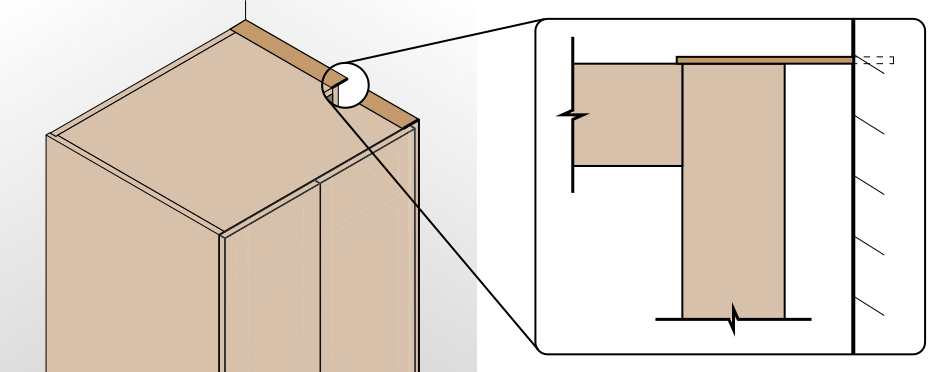
Figure 41
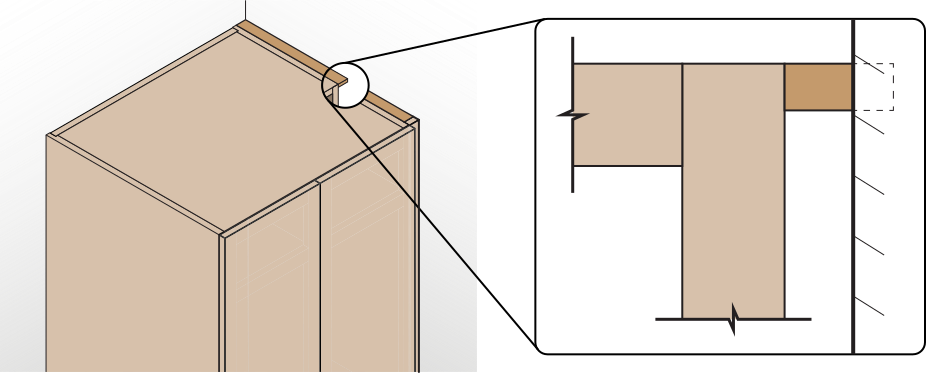
Figure 42

Figure 8

Figure 9

Figure 10
a) Joints are not permitted:
| Premium | Custom | Economy |
|---|---|---|
| In material less than 2438 mm [96”] of horizontal grain or directional pattern and 1219 mm [48”] of or directional pattern |
In material less than 2438 mm [96”] of horizontal grain or directional pattern and 1219 mm [48”] of vertical grain or directional pattern |
No requirement |
b) Soffit and fascia panels shall be a minimum of 12.7 mm [.500”] thick.
c) At fascia panels, grain direction (if any) shall run vertical, or be at the option of the manufacturer/supplier if less than (See Figure 85):
| Premium | Custom | Economy |
|---|---|---|
| 38.1 mm [1.500”] tall | 305 mm [12”] tall | 305 mm [12”] tall |
d) Where soffit and fascia panels meet, grain direction shall be continuous.
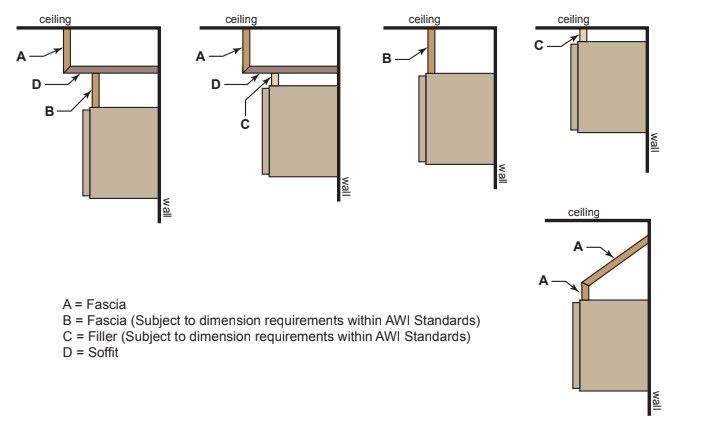
Figure 85
3.4.7 Edges, Exposed and Semi-Exposed
a) Edgebanding is required.
b) Top edge of the cabinet ends less than 2032 mm [80”] above the floor or, when visible from above, shall be:
| Premium | Custom | Economy |
|---|---|---|
| Edgebanded with material compatible to the exposed exterior surface |
Edgebanded with material compatible to the exposed exterior surface |
At the option of the manufacturer/supplier |
c) Bottom edges of wall cabinet ends and light valances shall be of a:
| Premium | Custom | Economy |
|---|---|---|
| Material and color to match the exposed exterior surface |
Material and color to match the exposed exterior surface |
Material compatible to the exposed surface |
d) Bottom edges of s shall be edgebanded.
e) Edgebanding grain direction shall run parallel to the long direction of the edge regardless of grain and/or pattern of the panel surface.
f) T-moulding must be specified.
g) At exposed surfaces, dadoes or lock joints shall:
| Premium | Custom | Economy |
|---|---|---|
| Not run through the edgebanding |
Not run through the edgebanding |
No requirement |
h) Unless otherwise specified, the sequence of edge/face lamination shall be at the option of the manufacturer/supplier. Sequence of edge/face lamination shall be consistent throughout the project.
a) Edges shall be HPDL, , or a minimum of .5 mm [.018”] thick and maximum of 3 mm [.118”] at the manufacturer’s choice.
b) PVC and ABS shall be well matched to the exposed face.
c) PVC and ABS edgebanding thicker than 1 mm [.039”] shall be radiused or beveled on edges and corners.
d) HPDL edgebanding shall match exposed surfaces.
a) Edgebanding on exposed edges is required and shall be compatible for color and grain with exposed surfaces.
b) Exposed edges shall be edgebanded with solid wood, veneer, or veneer tape a minimum of .5 mm [.018”] thick to match the exposed exterior surface.
c) Veneer tape edgebanding thicker than 1 mm [.039”] be shall be radiused or beveled on edges and corners.
d) Finger joints in veneer tape used as edgebanding are permitted.
3.4.8 Edges, Doors
a) At edgebanding thickness less than 6.4 mm [.250”], the sequence of applying edgebanding shall be at the option of the manufacturer/supplier.
b) Wood edgebanding thickness greater than or equal to 6.4 mm [.250”] on face shall be mitered.
c) At back-s, edgebanding shall be specified.
d) Doors shall be edgebanded at all four edges except when back-beveled or when composed of solid wood.
a) At opaque finish:
| Premium | Custom | Economy |
|---|---|---|
| MDO shall be edgebanded |
All edges shall be filled or edgebanded |
All edges shall be filled or edgebanded |
| MDF shall be filled or edgebanded at the option of the manufacturer/supplier |
a) Top and bottom edges are concealed and not required to be edgebanded or filled.
b) Vertical edges are considered exposed and shall be edgebanded.
a) Doors manufactured/supplied from panel products shall be edgebanded or finished to match exposedsurfaces.
a) Frameless glass doors shall have:
| Premium | Custom | Economy |
|---|---|---|
| Exposed edges flat polished |
Exposed edges flat polished |
Exposed edges flat ground |
3.4.9 Edges, Drawers
a) At edgebanding thickness less than 6.4 mm [.250”], the sequence of applying edgebanding shall be at the option of the manufacturer/supplier.
b) Wood edgebanding thickness greater than or equal to 6.4 mm [.250”] on face shall be mitered.
c) At back-beveled edges, edgebanding shall be specified.
d) Drawer fronts and false fronts shall be edgebanded at all four edges except when back-beveled or when composed of solid wood.
a) At opaque finish:
| Premium | Custom | Economy |
|---|---|---|
| MDO shall be edgebanded |
All edges shall be filled or edgebanded |
All edges shall be filled or edgebanded |
| MDF shall be filled or edgebanded at the option of the manufacturer/supplier |
a) Top edges of drawer box shall be edgebanded.
b) At veneer core of seven-ply or more with no voids, edgebanding is not required.
c) At transparent finish panel product drawers:
| Premium | Custom | Economy |
|---|---|---|
| Edgebanding shall match drawer side surface |
Edgebanding shall match drawer side surface |
Veneer core edges shall be filled and sanded smooth |
a) Top edges of drawer box shall be filled and sanded smooth or edgebanded.
a) Top edges of drawer box shall be edgebanded.
b) Edgebanding shall match drawer box color.
a) At solid stock, drawer edges shall be:
| Premium | Custom | Economy |
|---|---|---|
| or eased | Profiled at the option of the manufacturer/ supplier |
Profiled at the option of the manufacturer/ supplier |
3.4.10 Edges, Shelves
a) Edges of adjustable shelves at semi exposed surfaces shall match interior or exterior surfaces at the option of the manufacturer/supplier.
b) If the gap between the end of a shelf and the interior cabinet body exceeds 6.4 mm [.250”], both ends of the shelf shall be:
| Premium | Custom | Economy |
|---|---|---|
| Edgebanded | Edgebanded | At the option of manufacturer/supplier |
a) Edges of writing or utility shelves shall be edgebanded with a material compatible in color to the exposed interior surface.
3.4.11 Tolerances
a) Machining rules for exposed and semi-exposed surfaces shall comply with smoothness requirements.
b) Sharp edges shall be eased.
c) Flat wood surfaces which can be sanded require a minimum of:
| Premium | Custom | Economy |
|---|---|---|
| 150 grit sanding | 120 grit sanding | 15 KMPI or 100 grit sanding |
d) Profiled and shaped wood surfaces require a minimum of:
| Premium | Custom | Economy |
|---|---|---|
| 120 grit sanding | 20 KMPI or 120 grit sanding |
15 KMPI or 100 grit sanding |
e) Turned wood surfaces require a minimum of:
| Premium | Custom | Economy |
|---|---|---|
| 180 grit sanding | 120 grit sanding | 15 KMPI or 100 grit sanding |
f) Visible sanding marks, excluding turned surfaces, shall be inconspicuous.
g) Tear out, knife nicks, or hit or miss machining is not permitted.
h) Glue or filler shall be inconspicuous and match the adjacent surface for smoothness.
a) , PVC, and wood edges shall be machined flush and filed, sanded, or buffed to remove machine marks and sharp edges.
b) (See Figure 23, F) shall not exceed:
| Premium | Custom | Economy |
|---|---|---|
| .1 mm [.004”] for a maximum length of 25.4 mm [1”] in any 1219 [48”] run |
.1 mm [.004”] for a maximum length of 25.4 mm [1”] in any 610 mm [24”] run |
.1 mm [.004”] for a maximum length of 50.8 mm [2”] in any 305 mm [12”] run |
c) Chip-out (See Figure 24, G) in area G shall be inconspicuous when viewed at:
| Premium | Custom | Economy |
|---|---|---|
| 610 mm [24”] | 1219 mm [48”] | 1829 mm [72”] |
d) Over-machined (See Figure 25, H) removal of color or pattern of face material shall be limited to:
| Premium | Custom | Economy |
|---|---|---|
| .8 mm x 38.1 mm [.031” x 1.500”] and shall not occur within 1829 mm [72”] of a similar occurrence |
.8 mm x 76.2 mm [.031” x 3”] and shall not occur within 1524 mm [60”] of a similar occurrence |
2.4 mm x 152.4 mm [.094” x 6”] and shall not occur within 1219 mm [48”] of a similar occurrence |
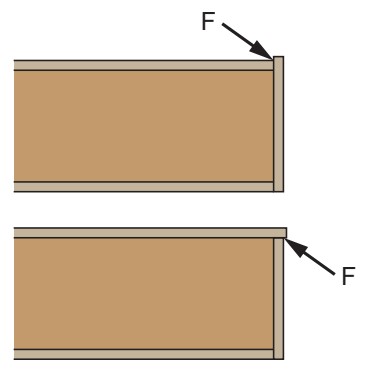
Figure 23
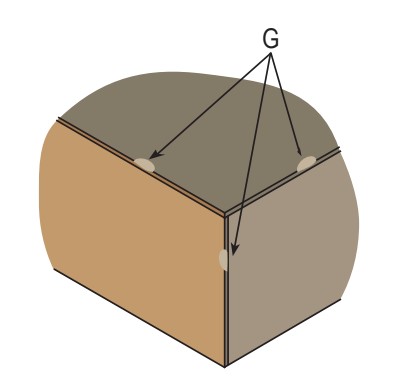
Figure 24
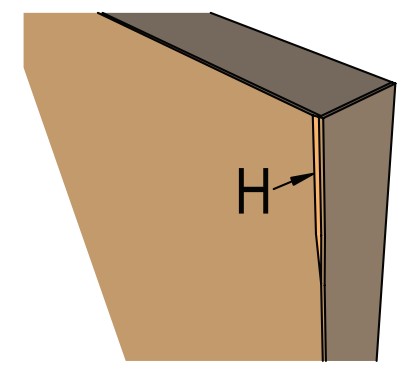
Figure 25
a) Doors, drawer fronts, and false fronts shall be properly sized to permit edge alignment between doors and adjacent drawers.
b) Edge alignment of doors and drawers (See Figure 30-N), in both the vertical and horizontal plane, shall not exceed:
| Premium | Custom | Economy |
|---|---|---|
| .8 mm [.031”] | 1.2 mm [.047”] | 1.6 mm [.063”] |
c) Doors and drawers shall align on the same flat plane as one another (See Figure 30-J) with a variance not to exceed:
| Premium | Custom | Economy |
|---|---|---|
| .8 mm [.031”] | 1.6 mm [.063”] | 3.2 mm [.125”] |
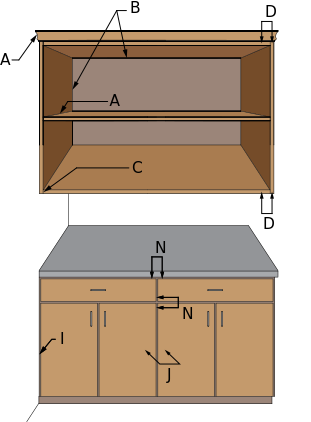
Figure 30
a) In reveal overlay frameless construction, the maximum uniform reveal (See Figure 43) within a cabinet elevation, between any edge of a door and/or drawer and another door and/or drawer or finished end, and doors hung in pairs, shall be as specified. If not specified, the following conditions shall apply (See Figure 43):
b) “X” shall be 3.2 mm [.125”], subject to a maximum uniform variance of:
| Premium | Custom | Economy |
|---|---|---|
| +/- .8 mm [.031”] | +/- 1.6 mm [.063”] | +/- 2.4 mm [.125”] |
c) “Y” shall be determined by the hinge overlay.
d) “Z” varies from 3.2 mm [.125”] to 9.6 mm and shall be consistent across elevations (See Figure 15). However, for laboratory countertops, reveal at “Z” may be 6.4 mm [.250”] to 25.4 mm [1”] to permit attachment of laboratory equipment. (See Figure 17)
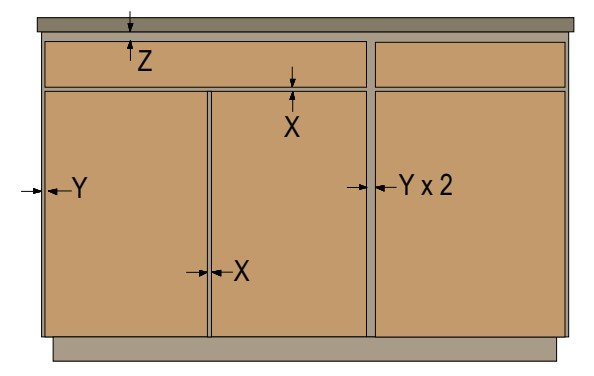
Figure 43
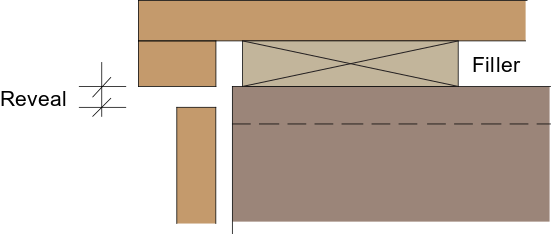
Figure 15

Figure 17
a) In flush overlay frameless construction, the maximum uniform reveal (See Figure 44) within a cabinet elevation, between any edge of a door and/or drawer and another door and/or drawer or finished end, and doors hung in pairs, shall be as specified. If not specified, the following conditions shall apply (See Figure 44):
b) “X” shall not exceed 3.2 mm [.125”].
c) “Y” shall not exceed 1.6 mm [.063”].
d) “X” and “Y” are subject to a maximum uniform variance of:
| Premium | Custom | Economy |
|---|---|---|
| +/- .8 mm [.031”] | +/- 1.6 mm [.063”] | +/- 2.4 mm [.125”] |
e) “Z” varies from 3.2 mm [.125”] to 9.6 mm and shall be consistent across elevations (See Figure 15). However, for laboratory countertops, reveal at “Z” may be 6.4 mm [.250”] to 25.4 mm [1”] to permit attachment of laboratory equipment. (See Figure 17)
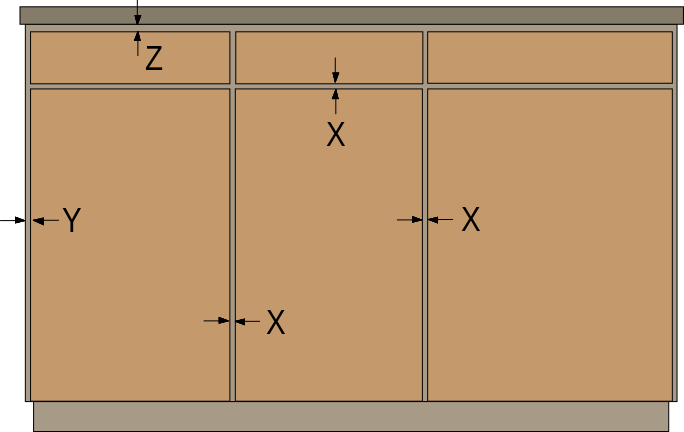
Figure 44
a) In reveal overlay face frame construction, the maximum uniform reveal (See Figure 45) within a cabinet elevation, between any edge of a door and/or drawer and another door and/or drawer or cabinet component, and doors hung in pairs, shall be as specified. If not specified, the following conditions shall apply (See Figure 45):
b) “X” shall not exceed 3.2 mm [.125”], subject to a maximum uniform variance of:
| Premium | Custom | Economy |
|---|---|---|
| +/- .8 mm [.031”] | +/- 1.6 mm [.063”] | +/- 2.4 mm [.125”] |
c) “Y” shall be as specified, indicated, or agreed. “Z” varies from 6.4 mm [.250”] to 25.4 mm [1”] and shall be consistent across elevations (See Figure 16).

Figure 16
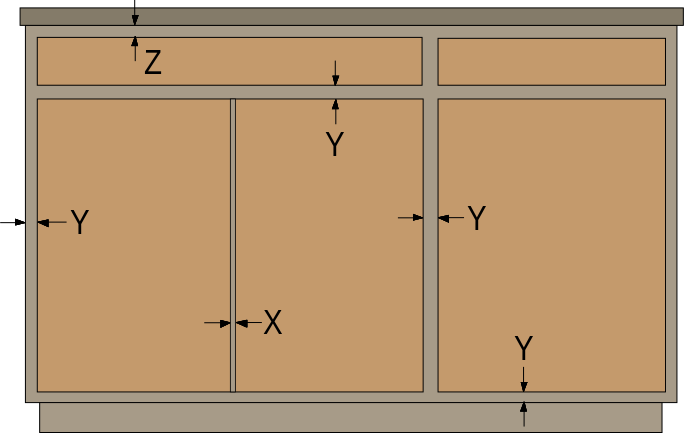
Figure 45
a) At inset face frame construction, the maximum uniform reveal (See Figure 46) within a cabinet elevation, between any edge of a door and/or drawer and another door and/or drawer or cabinet component, and doors hung in pairs, for “X” shall not exceed 3.2 mm [.125”], subject to a maximum uniform variance of:
| Premium | Custom | Economy |
|---|---|---|
| +/- .8 mm [.031”] | +/- 1.6 mm [.063”] | +/- 2.4 mm [.125”] |
b) “Y” and “Z” shall be as specified, indicated or agreed.
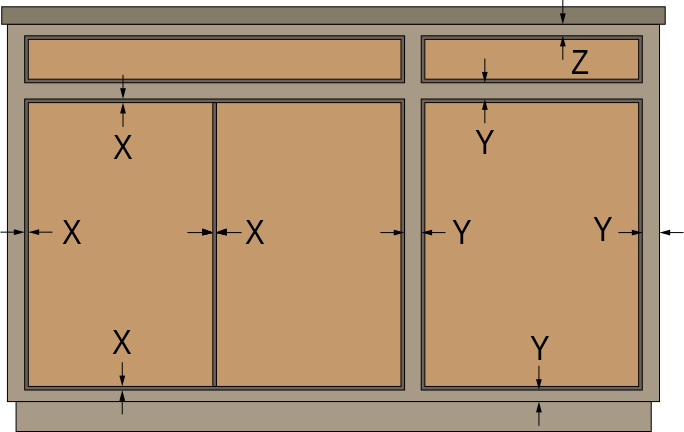
Figure 46
a) Flatness and of cabinet doors (See Figure 5-E) shall not exceed the grade tolerances indicated below in the diagonal or width and/or length as a linear ratio.
b) Flatness of installed and removable sheet products (See Figure 5, E), including doors, shall not exceed the following per lineal 305 mm [12″]:
| Premium | Custom | Economy |
|---|---|---|
| +/- .8 mm [.031″] | +/- 1.2 mm [.063″] | +/- 1.6 mm [.125″] |
c) Flatness and tolerances of cabinet doors shall not exceed a maximum of 6.4 mm [.250″] in any single door.
d) Measurements for flatness and warp shall be taken on the concave face of the panel.
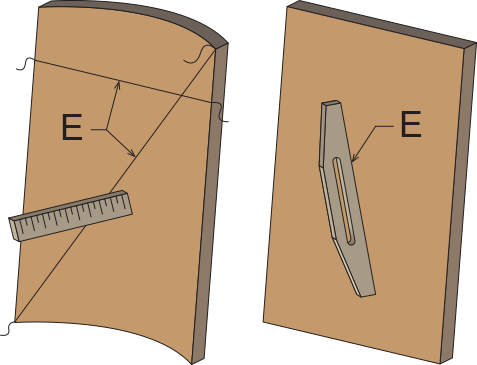
Figure 5

